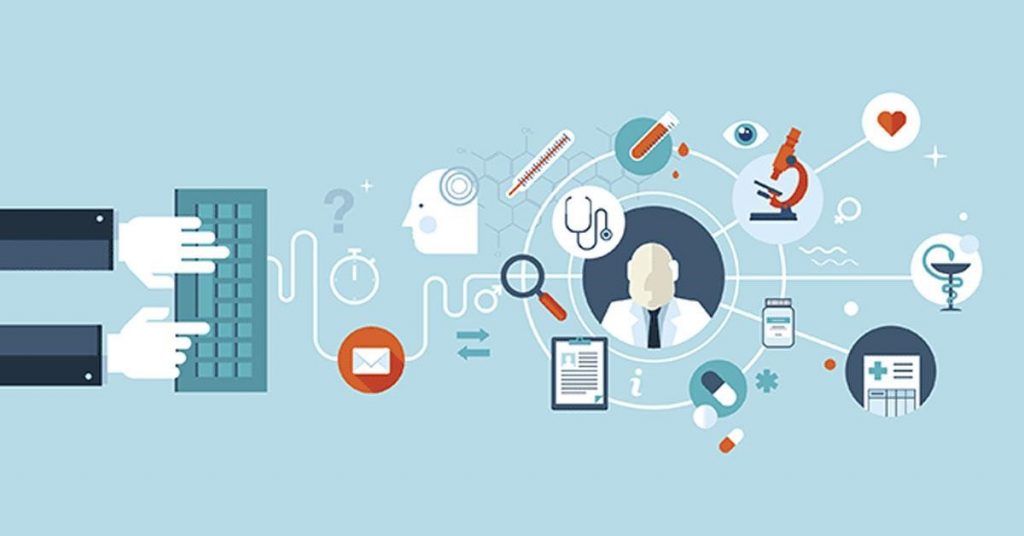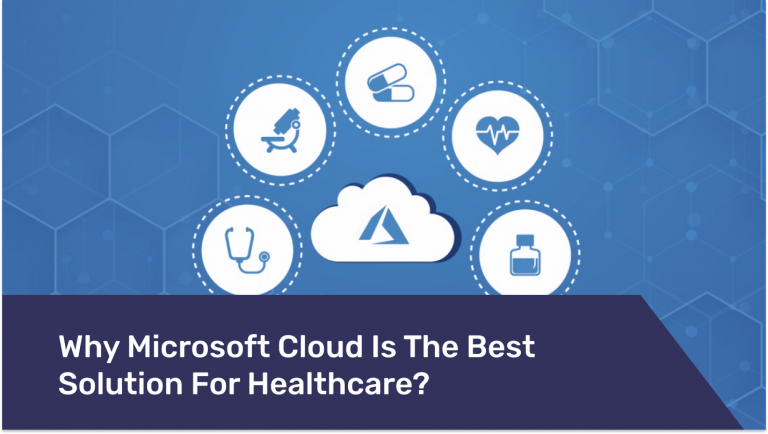In this article we will focus on EHR system development, looking at its every stage and trying to foresee and get ready for possible challenges.

What is the best way to organize, transmit and deal with the patients’ medical data? Yes, it is certainly Electronic Health Records (EHR) software development. Providing a thorough examination of personal health records, EHR systems make it possible to make the most of patient-doctor interactions, focusing on health and treatment instead of wasting time on compiling and collecting medical history documentation. Almost like a magic pill.
Productivity-enhancing, intuitive EHR software does great favors for both patients and healthcare providers since its features and spheres of integrations are wide indeed. It is super effective in delivering the data to medical staff members immediately and safely, and it makes the data search smooth and easy no matter how intricate the process might be. The growing demand for real-time, patient-centered electronic health records is demonstrated in the recent healthcare research numbers.

According to Valuates Reports, the EHR market size is expected to hit 47 billion USD by 2027 worldwide. If we compare with 2020, it was worth much less, only 29 billion UDS, and its CAGR up to 2027 is a bit more than 7%.
EHR and EMR are different things
There is often some sort of confusion when it comes to the EHR definition as vice versa another concept is used by mistake – Electronic Medical Records (EMR). The formally appropriate EHR explanation is the following: Electronic Health Records show far more extended capability and range of usage than just medical history. In fact, they are being used externally and are not always connected to illnesses.
EHRs provide safe and seamless personal data storage, and their integration into different healthcare systems is immediate. This way, any communication barriers are being excluded, and healthcare system effectiveness is being raised so that customers are happy with optimal results.
Why the EHRs market grows
Before moving to the EHR development stages, let us remind the main reasons why the market keeps growing so fast and steady.
One of the factors is in data access automatized. The hospital’s workflow benefits from it greatly as well as each of care-related companies providing testing, monitoring, education, etc.Such advantages are not to be forgotten in the future, on the contrary, they will only encourage further market growth.
No need to mention how crucial the precision and accuracy of health records are and EHR software is what protects medical systems from human errors.More complete personal data enables clinical staff to make the right decisions, and they need less time, that is how the cure gets more effective, and no one worries about data safety as well. To crown it all, easy access to medical records. No one is going to give it up, of course.

EHR adoption challenges
It may happen at the initial stage of using that EHR system can be difficult to manage, even if perfect collaboration, plenty of time and substantial resources have been provided. Let us have a look at potential barriers that might occur in your healthcare workflow.
- Some people just don’t like innovations
In perfect circumstances, the idea of adopting and using EHRs is nice and loved by everyone. The reality is different, however, and every innovation faces severe rejection, as a rule. Some patients won’t fancy new experiences or just quit what seems working bad, and doctors wouldn’t give up their usual routine for stepping into a new unknown place, etc. That is why, prior EHRs installation in your company, think of the ways to explain and fin the common ground with colleagues and customers.
- The technical performance and location
How old is the computer, and whether the internet connection is good in your location? They are among the main factors to guarantee safe data retrieval and sharing. Ensure that EHR implementation in your office is wise and the goals you set are realistic to accomplish.
- Education and guidance
While adopting the EHR system, training the staff is an absolute must-do practice. Sadly, it is a challenge for many to find additional time, work and costs. This is why detailed planning is important, you need to study carefully the way training and preparation would be performed, and agree only when it is obvious you are ready to make it fulfilled.
- How much does it cost?
Advanced innovations are never cheap either in their application or management. Before making the decision about EHR, it’s great to prepare the financial plan earlier so that to avoid stepping stones. It is extremely relevant for smaller businesses.
- Privacy issues
Naturally, a very important concern is about protected health information and how it will be handled after moving to EHRs. What can happen with private data in case of a cyber-attack or some other accident? Prior to implementing EHRs, find out how scrupulous privacy will be protected in the upgraded system.

How to develop EHR
In conquering most of the EHR implementation challenges, please follow these initial steps.
- Specify and illustrate your healthcare business key goal. For instance, if you want to get rid of a crowded waiting room with patients at the physician’s office, integrating an online timetable would be rewarding.
- Focus on your customers’ needs and discuss every single detail together. Hospital staff, patients and even insurance agents will contribute to your clear vision and effective business choices.
After fulfilling the first two steps, the time comes for formal documentation. It is the foundation of technical requirements where you mostly rely on your technology partner.


A good EHR system usually combines features that have proven to be a great help: Patient Portal, E-prescriptions, Access Control, Documentation, Integration with the Labs, etc. No need to mention, the system has to be compliant with all the state laws and requirements.
After preparation is done, we move to the discovery phase and prototype design. Here an important workflow chart is developed and important decisions on the technologies are made. With a prototype, you will get a general idea of what is working well and what needs to be improved. Then come Design and Service Oriented Architecture, Testing for the possible bugs which will go on further, at the stages of Launching and Maintenance. The development process is fluent, the features can be added, edited or eliminated, for the perfect final version.
The EHR system market is growing steadily due to the benefits both patients and doctors get from adopting the software. While doctors enjoy the accessibility to health records, scheduled appointments, one window informational panel, etc, patients take advantage of educational content, storing insurance cards, and reminders about billing and appointments. Being aware of the possible barriers is helpful for your business at the very beginning so that they are manageable in the best way and realistic goals can be set.
Our ZenBit team is connecting innovative technology solutions, patient care and better life quality. We are ready to help your business contribute to the future of health. Let’s get in touch!






